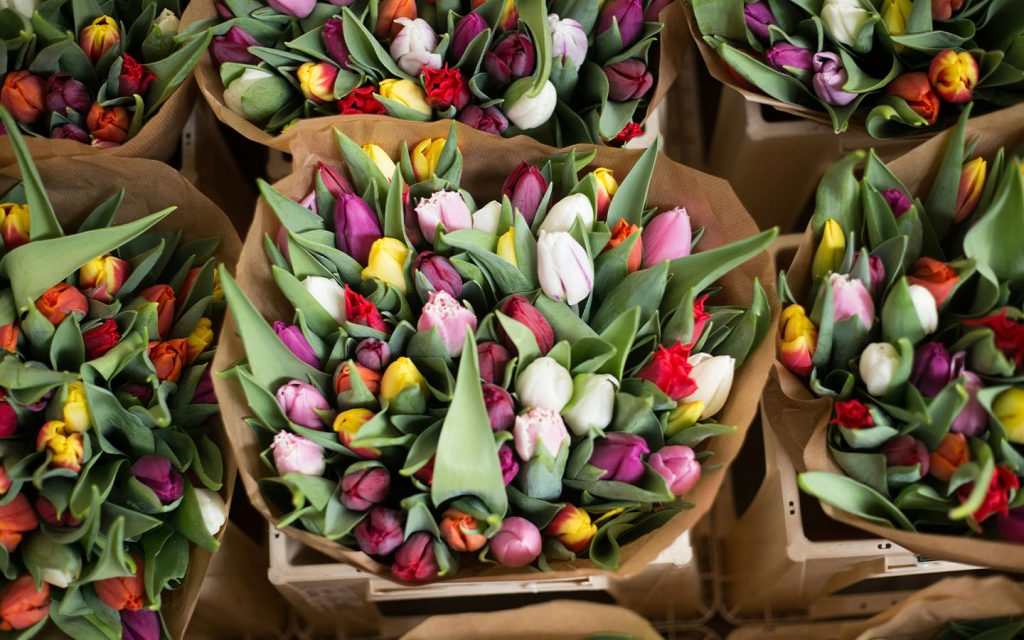Apparently, it is customary in Mexico for children to wake up their mothers at the crack of dawn on Mother’s Day by serenading them with the song “Las Mañanitas,” sometimes with a Mariachi band to boot.
Of course, many mums would be horrified at having their precious sleep interrupted by their offspring at the window in full song, standing in front of a grinning group of sombrero-wearing guitarists. But it does go to show the extraordinary lengths people go to honour their mothers on Mother’s Day.
[See more: What Macao mothers really want this Mother’s Day]
In Mexico, El Dia de las Madres falls on 10 May. Thailand celebrates it on 12 August (the same day as the birthday of the Queen consort Sirikit). In Ethiopia, the occasion is known as Antrosht and lasts for three days in autumn. Britons observe Mothering Sunday on the fourth Sunday in Lent. Many other countries, however, celebrate it on the second Sunday in May – an American custom that is fast becoming the global (and commercial) norm.
But how much do you know about Mother’s Day? This year, as you raise a glass in her honour, you can amuse your mum, stepmum, adopted mother or mother figure with some of these fun facts.
1. There are huge differences between countries when it comes to the average age of first time mothers

Motherhood is a universal experience that transcends cultural boundaries. However, what it looks like in different countries varies significantly – something lifestyle blog Cup of Jo has beautifully captured in the series Motherhood Around the World.
One of the most notable variations is the average age of first time mums across countries, with social, economic, and cultural factors all having an effect. Cultural norms and limited access to education and healthcare are just a few of the socioeconomic factors that can contribute to earlier childbirth, which is more predominant in so-called developing countries.
For instance, by the age a German woman is starting college, an Angolan woman will likely be welcoming her first child. That German woman is more likely to wait until the age of 29 to become a mother for the first time. In the meantime, she may have enjoyed increased educational opportunities, easy access to birth control, and pursued a career, while delaying marriage.
According to research, Angola has the youngest first-time mothers (age 18 on average), while Greece has the highest average age of first-time mothers (31 years), closely followed by Australia and South Korea. The latter has the world’s lowest birth rate, having recorded a rate of just 0.72 per thousand last year.
2. If full time, stay-at-home mums got paid, they would earn almost US$127,000 a year

The practice of mums putting their careers on hold to look after their children is especially prevalent in countries where professional childcare consumes a significant portion of a household income. According to Yahoo Finance, American families spent nearly a quarter of their household income on childcare last year.
Putting a concrete number to the work stay at home mums undertake could help to raise awareness to its importance – and the number might surprise you. If full-time, stay-at-home mums got paid, they would earn almost US$127,000 a year based on the number of tasks they handle on a daily basis, Yahoo Finance reports. Cooking, cleaning, grocery shopping, and daunting night feeds are just some of the tasks on the list mums manage round-the-clock.
That’s more than the average salary of an American nurse in 2022 (US$ 89,010) and almost twice the average salary of classroom teachers in public schools in the US, according to statistics and market research platform Statista.
Besides being unpaid, stay at home mums will agree that their role is still, in many cultures, not valued enough. This Mother’s Day video (see above) titled World’s Toughest Job – showing a job interview for a “director of operations” position – went viral for portraying the hard work mums do with no pay and no breaks.
3. One of the originators of Mother’s Day grew to hate it and wanted to abolish it

Although festivals celebrating motherhood can be traced all the way back to ancient Egypt, the modern day incarnation of Mother’s Day, as it is practised in the US and many other parts of the world, owes much to a Philadelphian woman named Anna Jarvis.
Hoping to honour her mother, who passed away in 1905, as well as the work of mothers in general, Jarvis organised a Mother’s Day event at a church in West Virginia in 1908. After receiving strong support, Jarvis began a concerted campaign to have Mother’s Day designated as a national holiday, a goal that she managed to achieve when President Woodrow Wilson declared it official in 1914.
By 1920, the occasion had grown into a big business with shops selling Mother’s Day themed flowers, cards and gifts. This irked Jarvis who felt that the event was becoming too commercialised and straying from her original intention of a reflective, quiet and personal day for mothers and their offspring. In fact, her disgust at the commercial appropriation of the day grew to be so strong that she once ordered a “Mother’s Day salad” in a department store and threw it on the floor.
“If the American people are not willing to protect Mother’s Day from the hordes of money schemers that would overwhelm it with their schemes, then we shall cease having a Mother’s Day,” Jarvis wrote during the 1920s.
Jarvis ironically petitioned for the abolition of the very day she helped to establish, right up until her death in 1948.
4. Mother’s Day has partial origins in an 1870s movement by anti-war activists

Activism is not a word that one normally associates with Mother’s Day. However, its creation in the US can be linked to anti-war campaigners such as Julia Ward Howe who is now better known for penning the American Civil War song “Battle Hymn of the Republic.”
Howe was inspired to establish one of the progenitors to the current Mother’s Day in the US after witnessing firsthand the carnage of the Civil War while tending to the needs of the sick and injured servicemen as a volunteer with the US Sanitary Commission.
After the war, she organised a “Mother’s Day for Peace” in the 1870s, which called on mothers to congregate and take part in activities to promote pacifism. She also published A Mother’s Day Proclamation in 1870. “Our sons shall not be taken from us to unlearn all that we have been able to teach them of charity, mercy and patience,” she wrote. “We, the women of one country will be too tender of those of another country to allow our sons to be trained to injure theirs.”
Other trail blazers include Juliet Calhoun Blakely, whose sermon helped to set in motion the organisation of Mother’s Day in Michigan, and Frank Hering, a football coach who organised Mother’s Day events throughout the late 19th and early 20th century, earning himself the nickname “Father of Mother’s Day.”
5. Transwomen can be breastfeeding mothers

In 2018, the journal Transgender Health published a study that showed it was possible to induce lactation in a 30-year-old transwoman.
The woman “had been receiving feminising hormone therapy for the past 6 years” and “presented to our clinic with the goal of being able to breastfeed her adopted infant,” researchers said. “After implementing a regimen of domperidone, estradiol, progesterone, and breast pumping, she was able to achieve sufficient breast milk volume to be the sole source of nourishment for her child for six weeks. This case illustrates that, in some circumstances, modest but functional lactation can be induced in transgender women.”
According to Pink News, the woman was able to produce about eight ounces of milk a day. Her paediatrician said the baby’s “growth, feeding and bowel habits were developmentally appropriate.”
A subsequent study of another lactating transwoman found that her milk “showed values of protein, fat, lactose and calorie content at or above those of standard-term milk.”
6. The myth of the wicked stepmother is just that

From fairy tales like Hansel and Gretel to a large number of Hollywood movies, the figure of the wicked stepmother is a trope in popular culture.
Researchers at Ohio State University found that evil stepmums featured in “over 900 stories” and that “these myths make it difficult for the stepmother to blend into her new family and succeed in her new role.” That’s a problem when divorce rates in many countries exceed 50 percent, making blended families more common than ever.
Adding to the pressure of taking on their partner’s children, stepmums have to walk a delicate emotional line. Ohio researchers found that “a woman is supposed to take on a motherly role – taking care of children and housework – but the stepmother role expects that she remain more distant. This can be a real dilemma for a stepfamily because a stepmother can’t be close and distant at the same time.”
In spite of the way they are maligned in popular culture, there is no evidence to show that stepmums are harmful to children. In fact, the BBC says “research shows that “stepmothers can be uniquely beneficial to families, serving as the glue that holds members together after a separation, and providing extra support to grieving children.”
In a 2021 survey of 295 stepchildren conducted by the University of North Carolina, found most had positive relationships with their stepmothers, and that the stepmums scored an average of 3.91 out of 5 on a wide range of relationship indicators. Stepmothers can really “make a unique contribution to the wellbeing of a child,” researchers concluded.
— With reporting by Sara Santos Silva and Kenny Fong






